According to Wikipedia, there is no uniform agreement on this color's place in the visible or electromagnetic spectrum. More than a dozen combinations of primary blue and purple are named "indigo." The color standard might be the dye derived from the plant Indigofera tinctoria from India, and also from the woad plant, Isatis tinctoria, but the pigment is now mostly produced chemically or displayed on computer screens.
What color is an Indigo Bunting? Actually it is black, and the blue color is not due to pigment but rather the reflection and diffraction of light from its feathers. Given the vagaries of light, shadow, reflection, background, camera ISO and shutter speed, and the effects of post-processing and the computer screen settings of the photographer as well as that of the viewer (or the ink used in printing), photographic images provide a whole range of answers. Following are some of the variations on the indigo theme.
The head of the adult male Indigo Bunting in breeding plumage appears deepest in color, approaching true indigo:
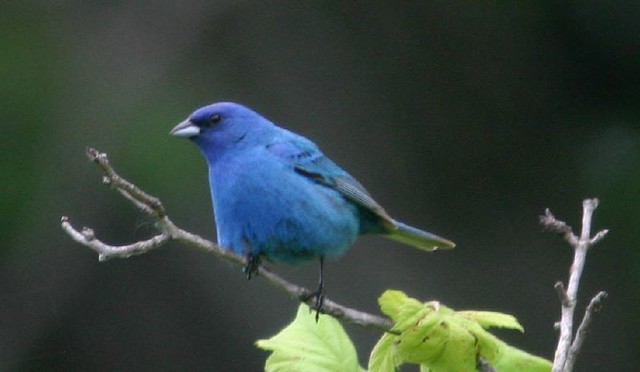
Bright Metallic Indigo on blue:

Imperial blue:
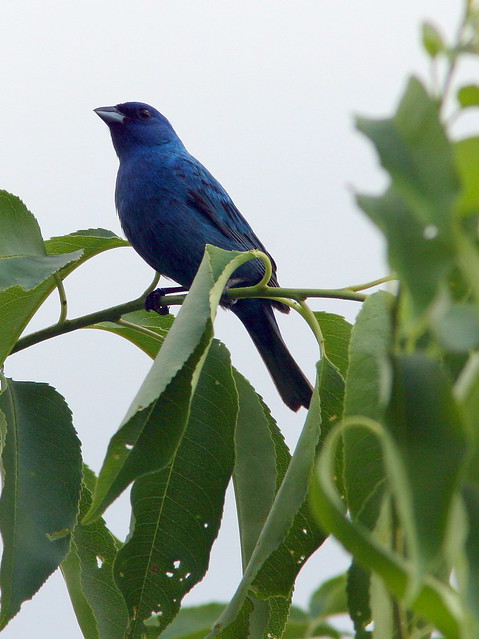
Violet Blue
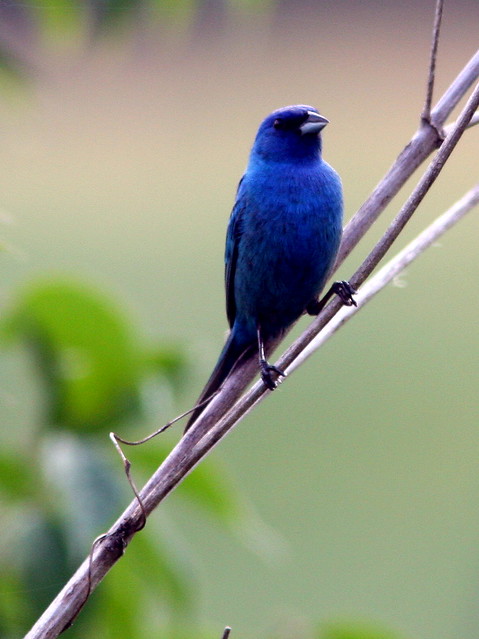
Denim Blue


Navy Blue (low light and distance contribute to this effect):
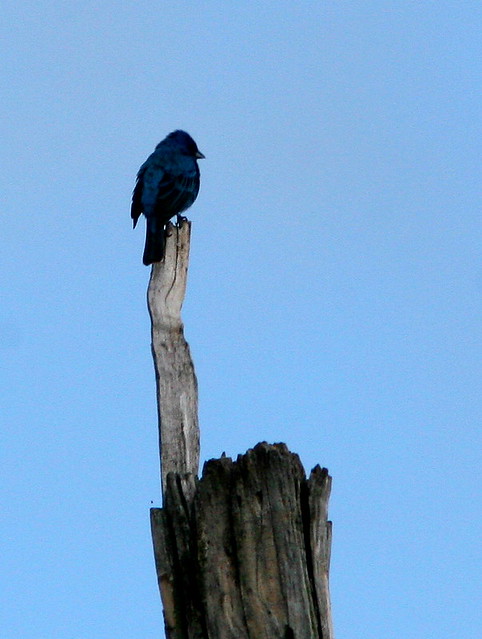
Dull Blue, also the effect of low light or backlighting:

Greenish Blue (I'm not sure whether the tint is real or an artifact of post-processing):
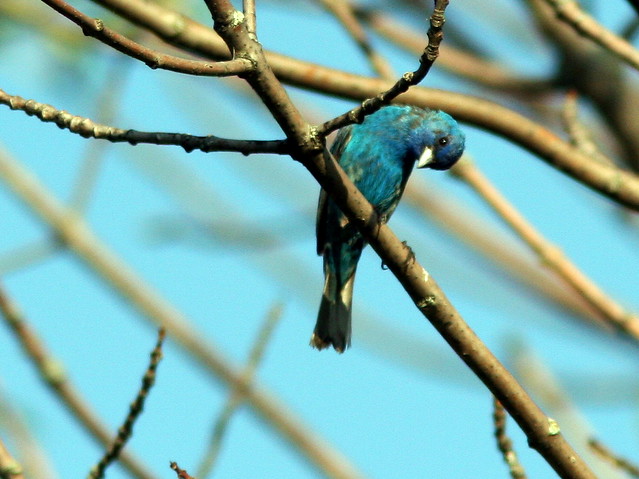
Slightly blue (Adult male, molting or non-breeding):

Not blue (probably an immature female):
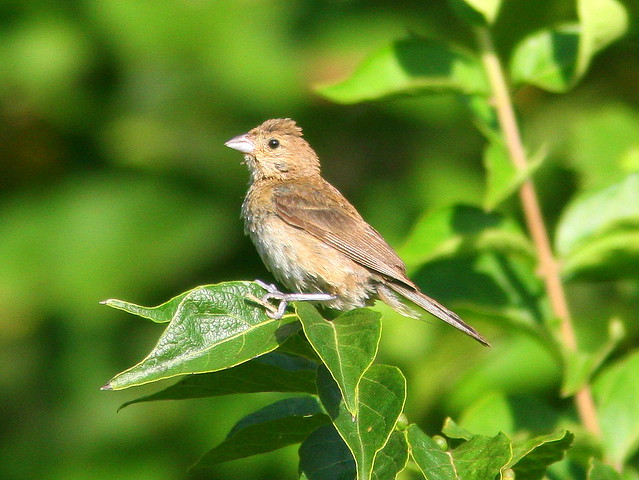
Not blue (I believe this is an adult female because of the richness of its brown back; older females usually show some blue on their wings and/or tail):
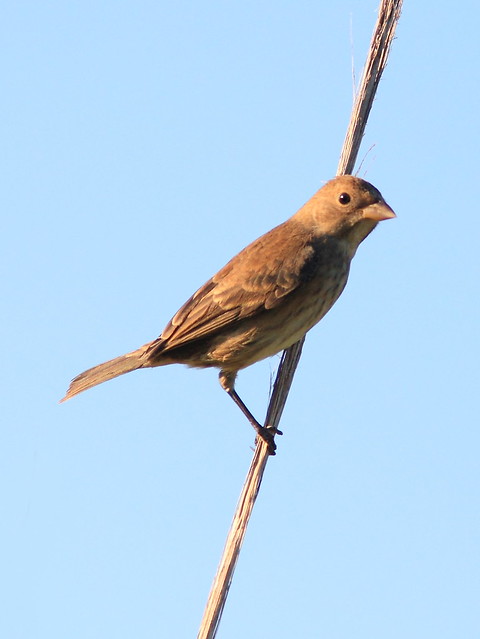
Partly Blue (an adult male in winter):
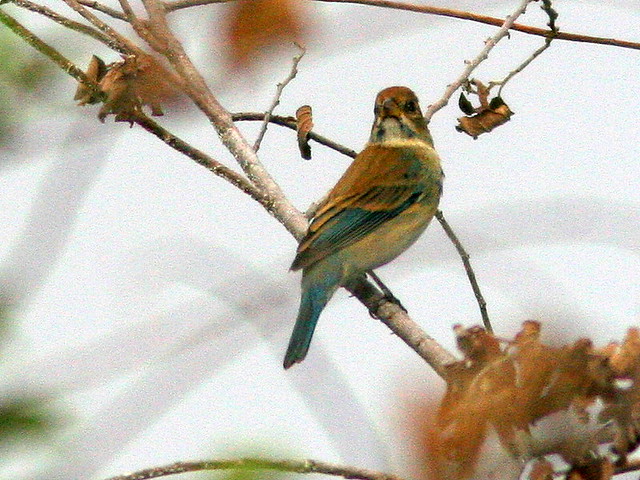
Blue with green companion (winter adult male Indigo Bunting with female Painted Bunting):

Belligerent Blue (standing up to an Eastern Kingbird that tried to interrupt his singing):
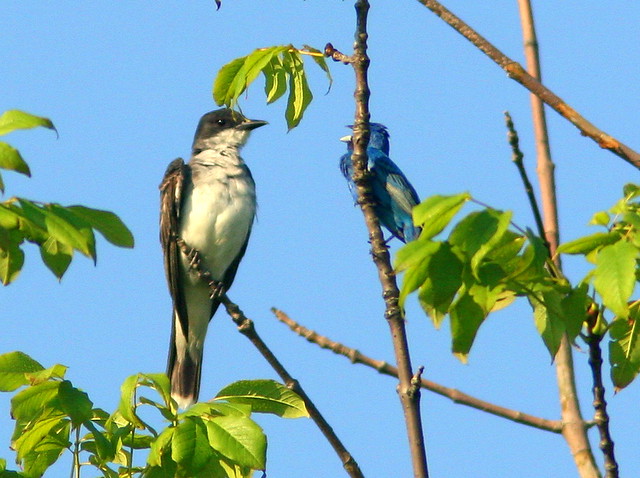
smiled all the way through. :)
ReplyDeleteI love these birds. I waited all summer to see one, no such luck. Your shots are great! Thanks for sharing.
ReplyDeleteHi Ken. What a wonderful variety of blue in hates birds apart from the brown ones. great post
ReplyDeleteJust amazing; this just made me smile so much. The first time I ever saw indigo buntings we were wintering in Texas and I thought I'd discovered some amazing exotic species. All the other birds were kind of 'ho hum', this happens every year!!! I still think they are wonderful and I'll never forget that first sighting.
ReplyDeleteI learned that thing about bluejays, not being really blue at all, but black, a long time ago, but I'd forgotten.....This whole post was so much fun, thanks for sharing!
So many great shots of the blues! They are fairly rare around here except during spring migration.
ReplyDeleteWhat a nice essay on blue, Ken! But you forgot my particular favorite: "invisible blue", which seems to happen every time I go looking for these beauties! :)
ReplyDeleteBeautiful collection of images. The Indigo Bunting is a gorgeous bird.
ReplyDeleteIf course, me being a wife of a Navy guy, I have to admit I liked the one taken from a distance...'the navy blue'. :o)
ReplyDeleteAwesome photos of this gorgeous bird. I like all the different blues.
ReplyDeleteThe nlue ones are my favorites too!
ReplyDeleteA brilliant exposition with great pictures Ken. I'd settle for any one of those slightly blue or extraordinary blue birds right now.
ReplyDeletethat was interesting indeed. :)
ReplyDelete